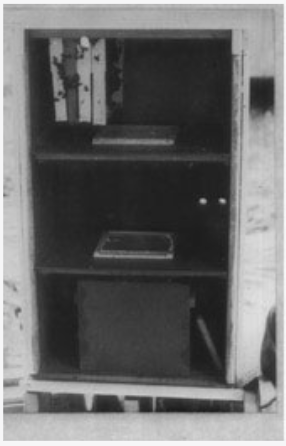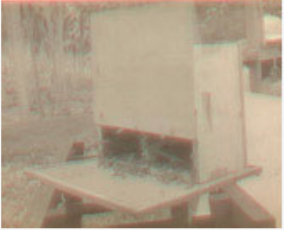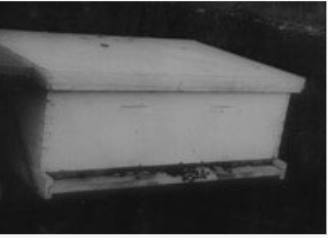OUR BEEKEEPING
- Joel Magsaysay
- Feb 24, 2018
- 3 min read

Starting in Honeybees
I started keeping honeybees in Mandaluyong, Metro Manila, in the late 1970's. It began as a hobby, with two colonies in my mother's garden.
There were many attempts to develop a technology heretofore untried, untested. Very few were interested in honeybees.
Early attempts…
One day, there were crawling and dead bees all over the garden. They must have been poisoned.
Next day, we were on our way to Tagaytay, Cavite. A friend of a Ian Aranza, who got me started in beekeeping, was building a house there. We met Mike Harpst, who graciously agreed to let us bring our bees there.

Thus began the start of my lifetime adventure with honeybees.
We "contract pollinated" the first Acacia mangium stand in the Philippines, which yielded seed sold to Malaysia for reforestation.

We pollinated Japanese buckwheat – tasting a little buckwheat honey. It was dark and rich.
Nowhere was too far to move our bees. We travelled as far as Mindoro, Arayat, Batangas, Los Banos, Laguna and Cavite. We were able to harvest a ton of honey from only 10 colonies.
I had caught "bee fever". Incurable.

Several years later, I met Violaine Valera, she was keeping one colony of bees in her front yard in Quezon City. I offered to teach her. After seven months, we were married…………. Ian gave us a few colonies as a wedding gift and we promptly loaded them in our old bee trailer……..it was a Honey moon!

In 1989, Dr. Ike Payawal and Dr. Cleo Cervancia of the University asked us, "if beekeeping has that much promise, how come we do not have a local beekeeping industry?"
"An industry has to be a joint effort between private individuals and institutions," was our answer. Thus was born the UPLB Bee Program in 1989.

Sammy Tonido was one the UPLB Bee Program's first beneficiaries.

The UPLB Bee Program has been training people from all walks of life: educators, students, professionals, farmers………



And invited our supplier to visit us here. Thus was launched Royal Bee Corp. Where we used our expertise in a carpentry shop…

We exported package bees to the Middle East. Here I am with Ian Aranza, preparing the package bees for export.

In 1994, we parted ways with RBC. We were penniless.
Rather than feel forlorn, defeated or forsaken, we felt exhilarated and hopeful. Note the few beehives, but the many beehive stands.
ILOG MARIA HONEYBEE FARMS WAS BORN

We grew...




Escorts of which we sent to UPLB for disease analysis…………

And many other queen suppliers too many to enumerate here. We bred from the best of them. This had an immediate and lasting effect on our own bee operation. We produced lots of honey…

And supplied many more bee projects nationwide, providing the necessary technical know-how…………
To seed farms, here at East West Seed Co…




Even finding time to catch some deadly Apis dorsata or pukyutan

Since 1988, we have been teaching many people from all walks of life, how to keep honeybees. Some of them have been:
Farmers in Indang, Cavite.

Steve Herrera of Bangkaan, Naic, Cavite. Here he is with his son. Holding a full frame of honey. Note that they are wearing NO protective clothing. Steve has gone to Canada as a beekeeper.

1991. ATDC or Apiculture Training and Development Center of Don Mariano Marcos Memorial State University of Bacnotan, La Union. ATDC has apiculture projects in Benguet. Here we are: Dr. My brother in law Greg Ira from International Institute for Rural Reconstruction. Apolonio Sito, Dr. Preston Dazon and Rey Lacquedan, inspecting colonies is Kesbeng, Benguet. Note the precarious perch of the beehives on newly excavated mountainside.

Farmers in Tanudan, Kalinga

Our topnotcher Peter Heiss of Susana, Heights, San Pedro……who managed to harvest 90 kilograms of honey from a single colony.


Getting some tips on how to control varroa mites from Otto And Gudrun Koeniger… the inventors of the miticide Apistan..here shown with Cleo Cervancia of UPLB

Fr. Rene Ramirez and friend…

Tonton and Mylene Mapa and kid… harvested some eucalyptus honey from Alabang Hills…..
















hey, At first, helping my parents get ready for their trip abroad was a little stressful, but with the help of the China Eastern Airlines New York Office in USA , everything was incredibly simple. My parents were anxious about the length of the trip, Tapout BJJ so their personnel took the time to carefully and politely explain every step. They helped verify all travel paperwork, set up cozy seats, and gave me a rundown of what to expect at each area of the airport. The finest part was how smoothly everything went for them on the day of departure; they boarded without any problems, checked in without any issues, and got excellent advice from the ground crew. They had…
It was one of those endless, drizzly Tuesday nights. The kind where the clock seems to be stuck in molasses, and the only sound is the constant, gentle tap-tap-tap of rain against the windowpane. I’d finished my work, scrolled through every social media app twice, and re-watched a show I didn’t even like the first time. The boredom was a physical weight. That’s when I remembered an ad I’d seen, completely by accident, for a site called super sky247.com. It had flashed on the screen during a football highlight reel, all bright lights and promises of instant fun. I’m not a gambler. The last time I’d placed a bet was on a horse named ‘Thunderhoof’ when I was eighteen; it…
Show your team pride and honour the heroes who serve with the Kansas City Chiefs 2025 Salute To Service Hoodie. Designed with premium comfort and a bold military-inspired look, this limited-edition hoodie blends iconic Chiefs spirit with a powerful tribute to service. Perfect for game days, chilly nights, or everyday wear, it’s more than just fan gear it’s a statement of loyalty, respect, and unwavering support.
In today’s rapidly evolving digital landscape, businesses cannot afford downtime or inefficient IT infrastructure. Leveraging Cloud Services | Nocagile and Network Monitoring | Nocagile is essential for maintaining operational efficiency, reducing costs, and enhancing security. By integrating advanced cloud solutions with proactive network monitoring, organizations can ensure seamless workflows, improve performance, and deliver a superior experience to their customers.
At Nocagile, our expertise lies in providing businesses with end-to-end cloud and network solutions designed to align with specific operational goals. Whether you are a startup looking to scale rapidly or an established enterprise seeking optimization, our solutions offer flexibility, reliability, and security.
Why Businesses Are Turning to Cloud Services
The shift toward cloud computing is no longer optional—it’s a necessity. Cloud Services…
Telehealth Distribution for RPM, CCM, RTM Services in USA and Book a Call for RPM, CCM, RTM Services in USA are two critical steps toward enhancing healthcare delivery in today’s technology-driven era. Whether you are a hospital, clinic, or an independent practice, our solutions are tailored to help you improve patient outcomes and optimize operational efficiency.For organizations seeking comprehensive telehealth solutions, Telehealth Distribution for RPM, CCM, RTM Services in USA is available through KaiCare.ai’s distribution service. You can also Book a Call for RPM, CCM, RTM Services in USA to explore customized solutions designed to meet your organization’s unique needs.
The Growing Importance of Telehealth in Modern Healthcare
Telehealth has become a cornerstone of modern healthcare, particularly in the United States. With the rise…